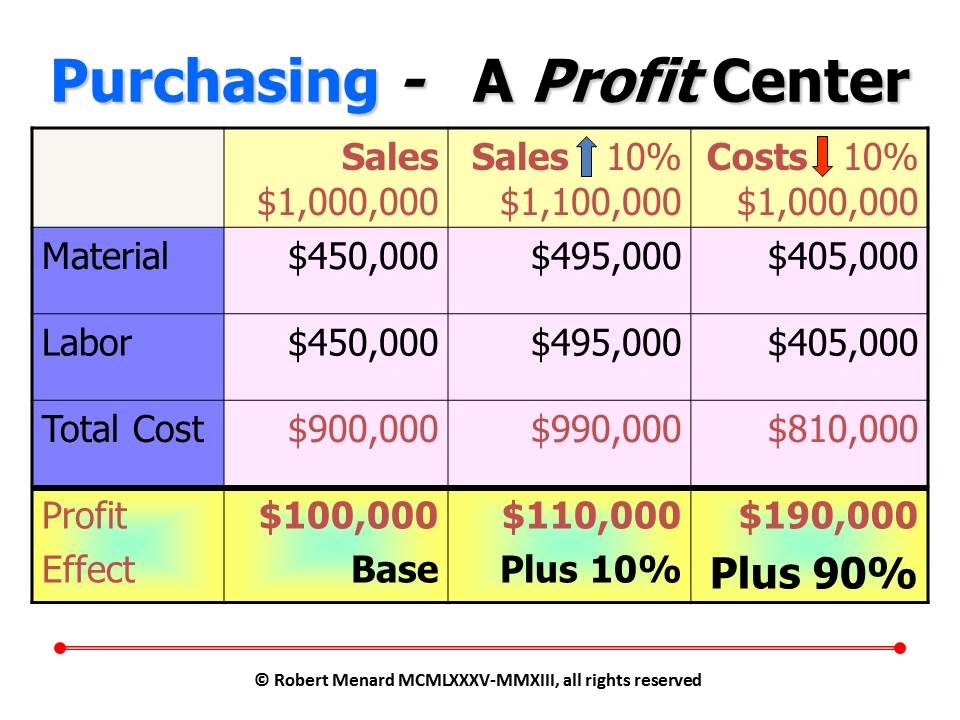Why Supply Chain Management Continues to Grow in Importance

Robert Menard
Certified Purchasing Professional,
Certified Professional Purchasing Consultant, Certified Green Purchasing Professional, Certified Professional Purchasing Manager
My consulting business largely depends upon clients reaching, by whatever means, the conclusion that the supply chain is the most fertile source of profitability. It is true that efficiency and cost cutting demand more attention in economic downturns but such should always be front of mind inn an enlightened business organization.
When economic times are good, management’s temptation is to keep growing the top line (revenue) while simultaneously neglecting embedded costs. When the “Musical Chairs” commercial tune inevitably grinds down, attention turns to the supply chain, where it always should have been, whether good times and bad.
My company slogan is, “Sell for a dollar, save a dime; save a dollar, earn ten dimes”. The math and economics are straight forward and simple as shown in this graphic, which demonstrates the effect of both purchasing and sales on profitability.

There are two ways to increase profits; increase sales or decrease costs. Assume a business grosses $1 million per year as shown in this graphic. It is scale-able for $10 million, $100 million, $1 Billion, $10 Billion, etc. For simplicity
• The components of sales are Material and Labor shown in the first column
• In each of the next three columns, add those two together to compute the Total Cost
• Subtract the Total Cost from the Sales to compute the Profit in the bottom row
• The Effect line in the bottom row shows the impact on savings
The second column is the Base. We will measure results compared to the Base. The third column shows the effect of increasing sales by 10%. Material and Labor rise a proportional 10% (neglecting minimal savings from leverage). The net effect is a 10% increase in Profit.
But, look what happens when Costs are reduced by 10%. Material and Labor drop by the proportional 10%. The net effect is a whopping 90% increase in profitability! There is no razzle-dazzle here. It is straight forward economics and arithmetic.
Back to Efficiency and Reducing Costs
Of course efficiency and cost cutting should be addressed by management in good times and bad. The undeniable truth is the same for the supply chain as famed bank robber Willie Sutton once observed, “That’s where the money is.”